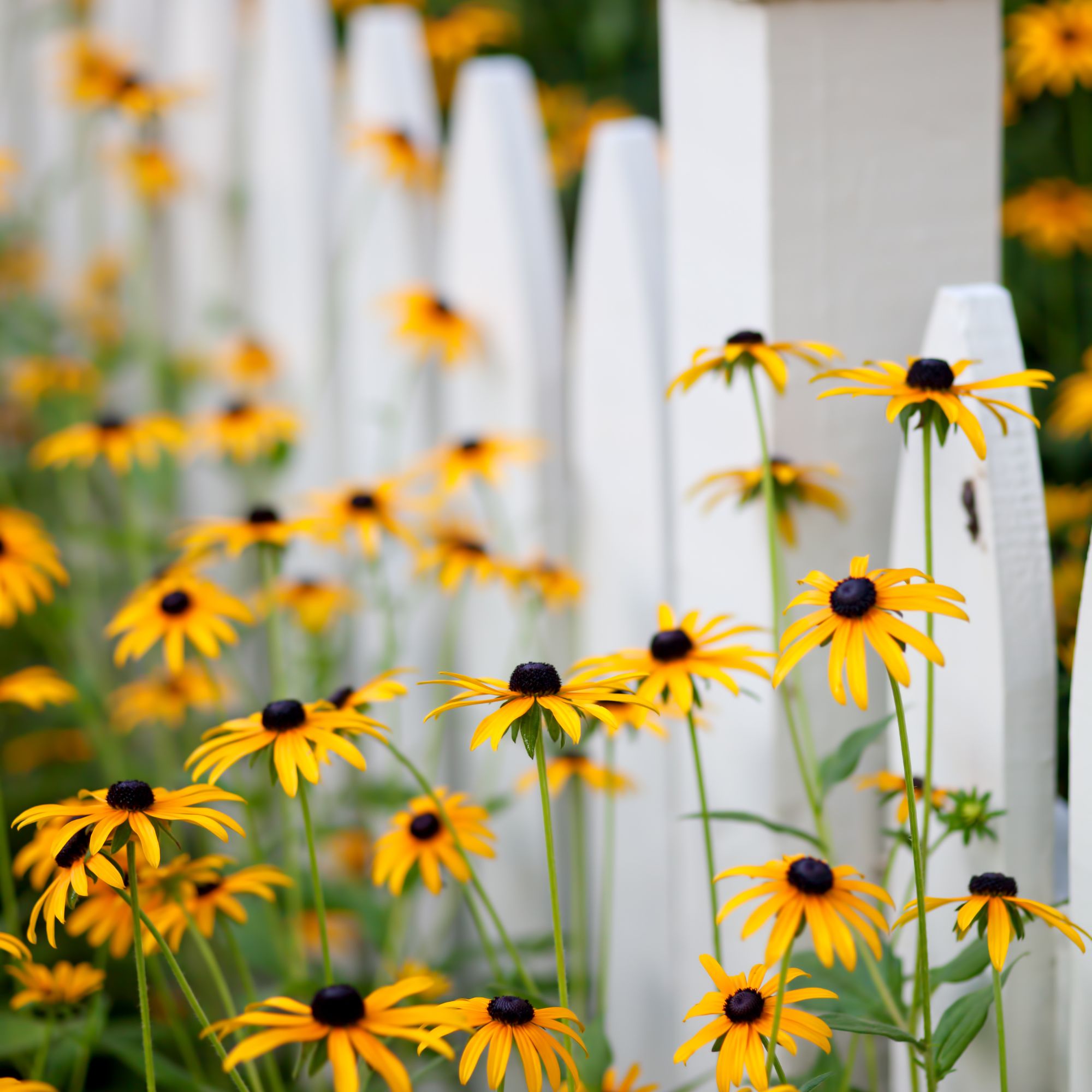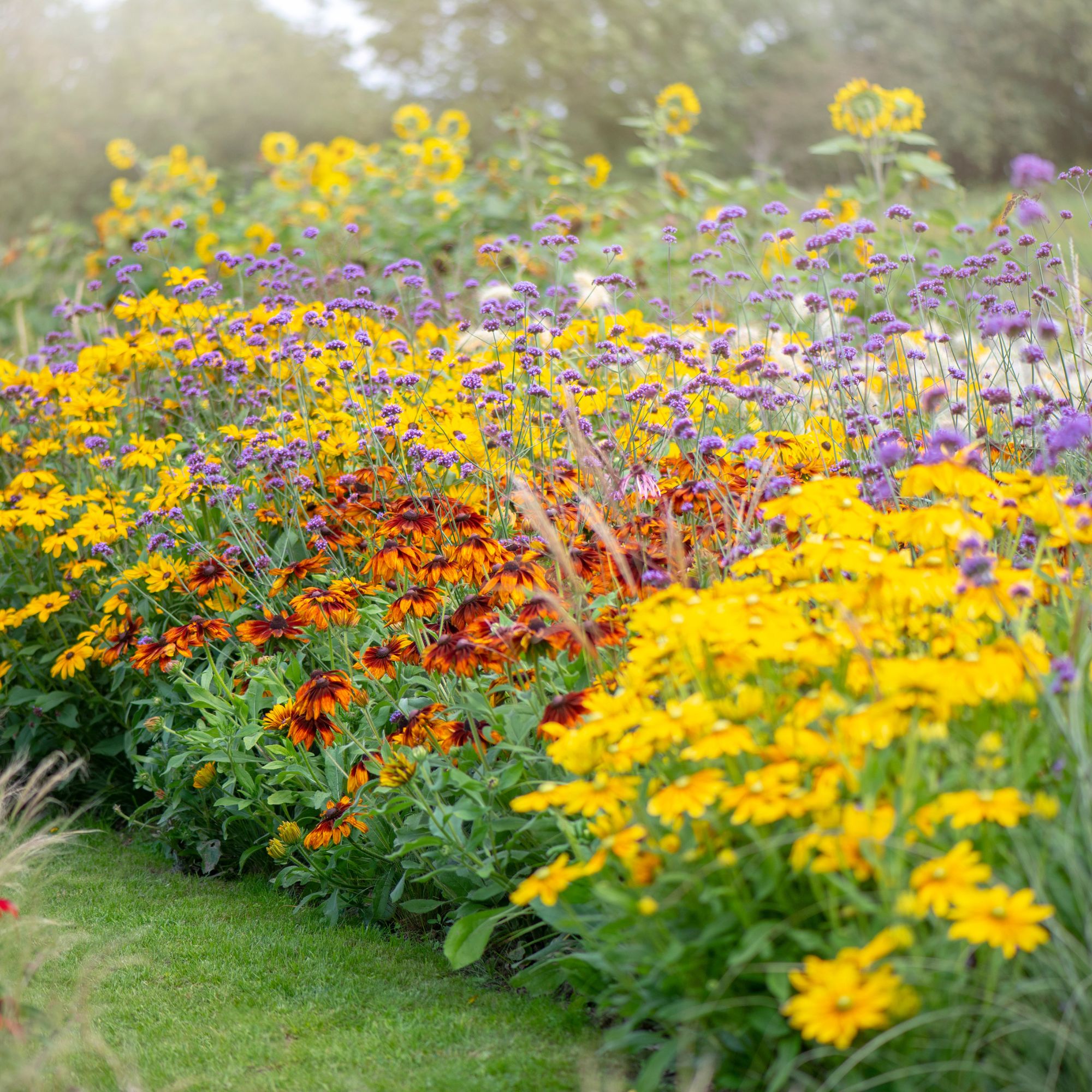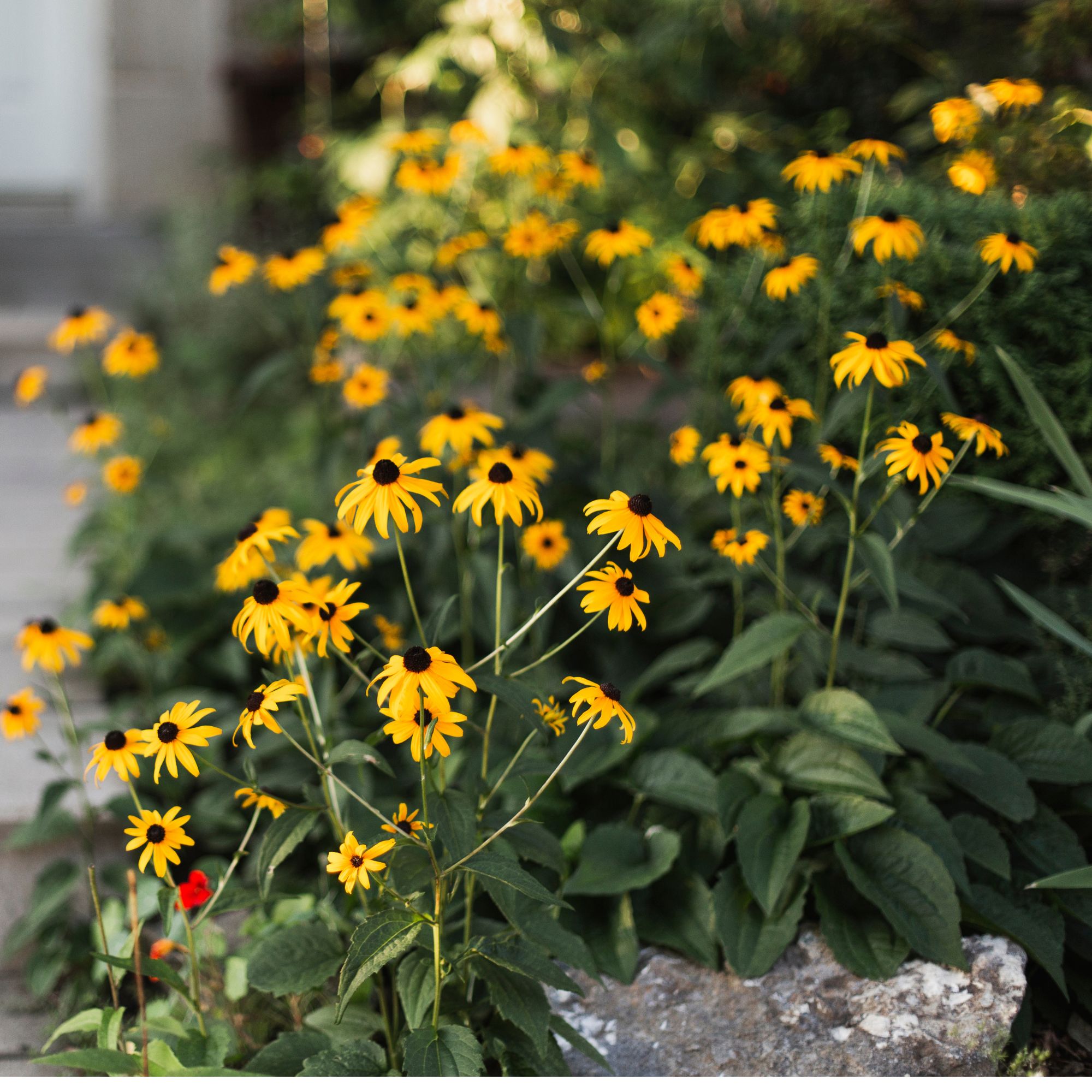
With three different names, rudbeckias are enigmas in the plant world. But whether you prefer to call them coneflowers or black-eyed Susans, one thing we all need to agree on is when to cut back rudbeckia. That’s not as easy as it sounds, though.
With their yellow daisy-like flowers and impressive height, rudbeckia will make an intriguing addition to any garden. If cared for properly, these flowers will add layers of colour to any garden borders or container garden. If left to their own devices, though, they’ll lose their vibrancy and fight back against the long blooming period that makes them so popular.
With this in mind, it’s well worth cutting back black-eyed Susans - but you must time this perfectly. If you choose one option over the other, your coneflowers may not make the impact you want them to. So, we asked the experts when to cut back rudbeckia.

When should you cut back rudbeckia?
It’s worth noting that you don’t technically have to cut rudbeckia if you don’t want to. In fact, these low-maintenance black-eyed Susans will continue to thrive if you leave them to their own devices - which is excellent news if your gardening to-do list is already a little overwhelming.
However, cutting back black-eyed Susans can work in your favour if you find time in your busy schedule. Not only will this task tidy up your garden, but it can also extend the plant’s blooming period, promote future growth and stop it from taking over the rest of your garden.
But when should you cut back rudbeckia? Well, you have two options to choose from. Morris Hankinson, Managing Director of Hopes Grove Nurseries, explains, ‘Both have benefits to your garden and wildlife, depending on your preferences.’

The first option is immediately after the blooming period - usually timed with the year's first frost. Because of this, you could add this task to your list of gardening jobs to do in November and tidy up your garden in the process.
Most experts would advise waiting until the spring to cut back your black-eyed Susans, though. Graham Smith MCIHort, a gardening expert from LBS Horticulture, explains, ‘The faded flowers of rudbeckia produce seeds that can provide another food source for birds in autumn and winter, and any fallen growth can help to insulate the roots of the plants in colder weather.’
Morris adds, ‘Many people also love the look of the attractive seedheads in their garden throughout the winter, so you can leave them standing and then cut your rudbeckia back before new shoots begin to grow in early spring.’
The window to do this is pretty flexible, though. You can cut back rudbeckia on the cusp of late winter and early spring, or you could wait until late spring to do this as long as you give them enough time to recover before their blooming period. In fact, you should never cut back rudbeckia if you see new growth forming.

Just remember that plants use their growth for protection during the colder months. So, if you cut back your black-eyed Susans in winter, you’ll need to replace what you cut back (you can cut back to the ground if needed) with a few inches of mulch to keep the soil as warm as possible.
And while waiting until spring has many perks, it’s important to still deadhead your rudbeckia as soon as the flowers have faded in late autumn/early winter - just as you should deadhead many other perennials.
This will stop the plant from self-seeding and popping up where you least expect it. It will also ensure that the plant spends all its energy on future growth rather than wasting it on seed production.
These pruners are perfect for cutting back rudbeckia, and a good pair of pruners is always worth having in the shed.
Before cutting back your rudbeckia, you should always clean your pruners or secateurs. This will prevent the spread of disease in your garden.
When cutting back anything, it's always a good idea to wear some gardening gloves. Again, this will help to reduce the potential spread of disease.
FAQs
Does rudbeckia return every year?
It can do, yes. But it’s important to note that rudbeckia can be sold as perennials, bi-annuals, or annuals, so this ultimately depends on the type of rudbeckia you’re growing.
If you choose to grow annual rudbeckia, it won’t return every year and will only bloom once in its life cycle. If you choose to grow perennial rudbeckia, it should come back year after year. And if you choose to grow biennial rudbeckia, it will live for just two years.
Does rudbeckia self seed?
Yes, rudbeckia self-seeds. The plant produces seeds after flowering, so you need to decide what you want to do with your rudbeckia. If you want to control the growing process, you can collect the seeds yourself and plant them in a way that works for you and your garden. If not, the wind will carry the seeds, and they’ll grow wherever they land.
Alternatively, you can deadhead your rudbeckia plant before the plant produces seeds. Simply snip off the spent blooms to prevent this from happening.
Can you keep rudbeckia in pots?
Yes, you can grow rudbeckia in pots. Black-eyed Susans grow extremely well in pots, but it’s important to note that they do like a fair amount of space to grow, and they will need to be watered more than those grown in the ground.
They also thrive in the sun, so make sure you place the pots somewhere that they can have at least six hours of sunlight a day.
So, when will you be cutting back your rudbeckia? After flowering? Or will you wait until spring?







